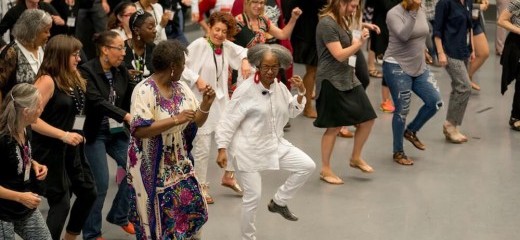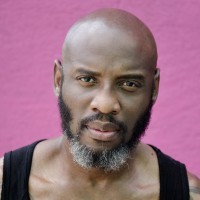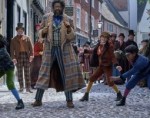
Dance/USA and The Promise of Equity and Inclusion . . . Two Years Later
by Gregory King
Since my immersion into the pool of academia, I’ve found myself swimming from one dance conference to another, engaging in discourse with the intentions of advancing the field—or at the very least equipping myself with added resources to supplement my teaching. And although conference attendance is an expected portion of life in academia, it is a part I have grown to dislike simply because I find myself caught up in the one-upmanship of exchanging credentials and performing the obligatory act of participating in panel discussions only to display my adeptness in a particular area of study.
Knowing this, I intentionally seek out and attend conferences where participants share research using dance as a social text, connecting it to contemporary socio-political issues, always bringing awareness to diversity, equity, and inclusion. I value these conferences because with the current political climate, the race, gender, and sexuality conversations are front and center in my quest for equity. I am also committed to exploring interdisciplinary approaches to scholarship and teaching, with the hope that my students will consider dance within its larger social, historical, cultural, and intellectual context.
Two years ago I attended the Dance/USA ‘15 conference held in Miami, and wrote about the many conversations aimed at the conference’s core values of inclusion, equity, and diversity. This year I decided to attend and document the progress Dance/USA has made towards achieving and advocating for these values. The conference was held in Kansas City, Missouri, and was hosted by Kansas City Ballet. Trekking around the conference, I saw familiar faces and caught up with other attendees, while slipping in and out of sessions. But it was while viewing the KC New Dance Partners performance on the main stage of the Kauffman Center for the Performing Arts that I relived a conversation I had with Executive Director Amy Fitterer two years prior, where she explained that Dance/USA would continue to recognize ballet but would also seek to elevate other dance models and dance makers.
As dancers from Owen/Cox Dance Group, Wylliams/Henry Contemporary Dance Company, and Kansas City Ballet graced the stage, performing ballets steeped in a classical Eurocentric aesthetic, I couldn’t help but think something was missing: otherness. Where were the other dance models, or dance genres from other dance makers?
While the dancers in these companies delivered stunning performances, I contemplated how the main stage programming could have been more inclusive of some of the smaller companies seen in the pop up performances around the conference, whose works and aesthetics may have been rooted in Asian or Black cultures. How could the works on the stage of the Kauffman Center for the Performing Arts have reflected the diverse dance world that continues to attend and support the Dance/USA conferences? I had these thoughts after witnessing Gurukul Dance Company, a company that specializes in the East Indian classical style called Kuchipudi, performing on the glass bridge of the National World War I Museum, and Souls of Sole, a collective of performance artists predominantly influenced by hip hop culture, who performed on the asphalt outside the entrance to the building housing the Kansas City Ballet.
I have my own unanswered questions about our value system towards dance and what we have come to expect on the proscenium stage. With side eyes, I developed more questions for Dance/USA:
- Was the main stage programming overseen by Dance/USA?
- Did the companies in the pop up performance lack the name recognition for main stage billing? or
- isn’t this proof of what some dance makers have been saying all along; that the not so balletic aesthetic had less chance of being funded or worse, being presented?
- How intentional are we being about our journey towards complete inclusion?
My side-eyes towards Dance/USA were somewhat refocused when conference attendee and President and CEO for the International Association of Blacks in Dance (IABD) Denise Saunders Thompson explained that the programming may have been an oversight of the host committee and not necessarily that of Dance/USA.
“Dance/USA may not want to micro manage the process for the host committee,” she said. “However, as the leading national dance service organization, Dance/USA may need to guide the programming of the host committees to ensure its core values are being advocated."
That same day, I spoke with another guest at this year’s gathering. Professor of dance at the University of Minnesota and artistic director of Ananya Dance Theatre, Ananya Chatterjea explained her own concerns regarding the conference’s diversity and inclusion model. “The conversations are just that, conversations . . . even so, I find myself entering the conversation from an entirely different place [than the others]. I don’t know what we are supposed to accomplish because often times the entry points are at extreme ends of the spectrum.”
She continued, using the popularity of contemporary dance as an example: “I believe the term contemporary dance is actually wrapped up in whiteness. I do contemporary dance . . . contemporary Indian dance. But when people say they do contemporary and I say you mean white contemporary, they get offended.” She continued, “White people want to claim everything, including the term contemporary. If they are not going to open the conversation to have contemporary be an all-inclusive entity, then they can have their own discussion . . . without me.”
She professed, “I am unapologetically brown and I bring my brownness to my dance. But in order for us to talk about the field of contemporary dance equally, we have to all locate ourselves within that field. We are all different. We have to acknowledge and honor that.”
Listening to Chatterjea and Thompson affirmed two of my concerns:
- We are entering the “inclusion” conversation from different places.
- We can’t be completely inclusive until we are intentional about learning the value of what we are trying to include.
Some may say we are making progress, but some of the diversity conversations are still not being attended by enough of my white counterparts. And oftentimes when white participants are in the room, I receive their comments and contributions as favors performed to placate those of us still hungry, waiting for the issues of equity and inclusion to be addressed with the urgency we feel.
Personally, I am still waiting for a time when planning committees intentionally bring awareness to the disproportionate representation of whiteness in performing arenas, a moment when equity and inclusion are no longer talking points but goals achieved by intentionally doing that of which we speak . . . when “baby steps” is no longer the answer given as to why greater strides have not been made towards undiminished equity and unmitigated inclusion.
Dance/USA 2017, Kansas City, June 7 – 10.
By Gregory King
July 14, 2017







